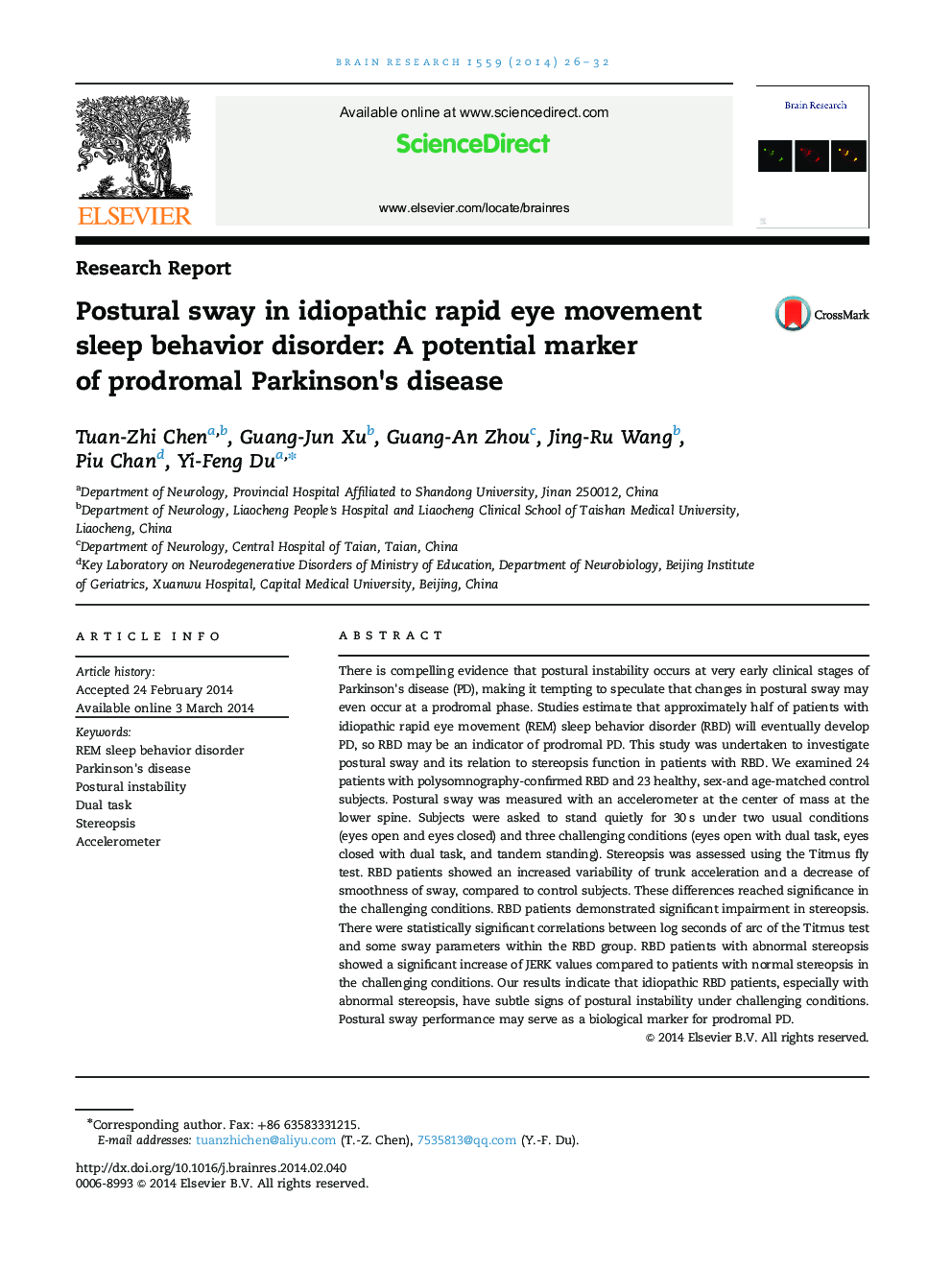| Article ID | Journal | Published Year | Pages | File Type |
|---|---|---|---|---|
| 4324383 | Brain Research | 2014 | 7 Pages |
•RBD patients showed an increase of RMS values in the challenging conditions.•RBD subjects showed larger JERK values in the challenging conditions.•RBD patients showed decreased stereopsis function on the Titmus fly test.•RBD patients have subtle signs of postural instability under challenging conditions.•Balance dynamics may serve as a new, sensitive biological marker of prodromal PD.
There is compelling evidence that postural instability occurs at very early clinical stages of Parkinson׳s disease (PD), making it tempting to speculate that changes in postural sway may even occur at a prodromal phase. Studies estimate that approximately half of patients with idiopathic rapid eye movement (REM) sleep behavior disorder (RBD) will eventually develop PD, so RBD may be an indicator of prodromal PD. This study was undertaken to investigate postural sway and its relation to stereopsis function in patients with RBD. We examined 24 patients with polysomnography-confirmed RBD and 23 healthy, sex-and age-matched control subjects. Postural sway was measured with an accelerometer at the center of mass at the lower spine. Subjects were asked to stand quietly for 30 s under two usual conditions (eyes open and eyes closed) and three challenging conditions (eyes open with dual task, eyes closed with dual task, and tandem standing). Stereopsis was assessed using the Titmus fly test. RBD patients showed an increased variability of trunk acceleration and a decrease of smoothness of sway, compared to control subjects. These differences reached significance in the challenging conditions. RBD patients demonstrated significant impairment in stereopsis. There were statistically significant correlations between log seconds of arc of the Titmus test and some sway parameters within the RBD group. RBD patients with abnormal stereopsis showed a significant increase of JERK values compared to patients with normal stereopsis in the challenging conditions. Our results indicate that idiopathic RBD patients, especially with abnormal stereopsis, have subtle signs of postural instability under challenging conditions. Postural sway performance may serve as a biological marker for prodromal PD.
